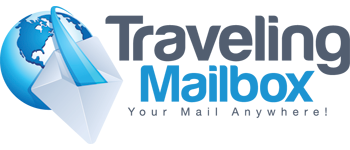6 Ways to Ensure you Receive Documents in Time for Tax Season
Make sure your tax returns are ready to file with six easy steps to a peaceful tax season.
As a kid, Halloween was a creepy time of year—full of ghosts and ghouls and scary movies. But as an adult, April 15 is often a more terrifying date than October 31st. The complexities of tax season can be a nightmare, whether you’re a full-time employee, a contract worker, or small business owner.
Scariest of all? The prospect of sitting down at the beginning of April to wade through your taxes—and realizing you’re missing vital documents.
You might not be able to avoid paying your taxes (and you shouldn’t), but you can make keeping track of your tax documents a worry of the past. Here are six ways you can ensure you receive all of your tax documents in time to file your returns by mid-April.

1. Know when to expect your tax documents.
It’s much easier to track your tax documents if you know when they’re coming! Your employer is required by law to get you your essential tax documents (including W2s and 1099s) by January 31st. This only changes if January 31st falls on a Sunday. In that case, you should expect them on February 1st at the absolute latest. If you don’t have them by then, it’s time to start composing a strongly worded email!
Some employers or providers might send documents out earlier in the month, but no one’s preparing for tax season before the New Year. Enjoy your December holiday break and then focus on taxes once you’ve settled back into your routine.
2. Double-check how your documents are being delivered.
A watched mailbox never boils with tax documents—especially if they were never sent there to begin with! These days, your employer doesn’t need to send you a hard copy of your taxes. In fact, you’re much more likely to receive all employment documentation, health care documents, and even stock revenues via email or digital account.
Most people find this pretty convenient, but it can get messy if your spam folder decides your W2 is a Nigerian phishing scam. If you can, add your employer HR and payroll email addresses to your safe sender list. Then double- and triple-check your spam folder throughout January.
3. Make a list of the documents you're expecting.
There’s nothing more frustrating than getting 80% of the way through your taxes and realizing you’re missing a document—especially if it’s 10pm on April 14th. At the start of the year, protect your sanity by making a list of all the official documents you’ll need to file.
Keep in mind, this list ranges from very simple to extremely complicated depending on your finances. If you work a single job on a W2, don’t hold investments other than in a savings account, and receive healthcare through the Marketplace, you’re likely only waiting on two or three documents.
However, anyone adding dependents, trading stocks, expecting foreign income, holding student loans, paying off a mortgage, or calculating freelance deductions is in for a rockier ride. Our advice? Don’t stress alone! You can always look up a list of possible documents that might apply to you or ask a tax broker or accountant for help.
4. Make sure you're registered to receive your documents.
If your tax documents come virtually, there’s a chance you might have to hurdle a bit of a paperwork wall before receiving them.
Certain payroll programs and other financial providers (including funding sites like Kickstarter) require you to confirm your address, email, and other contact info before they send over the goods.
They also might not send them at all. Payroll sites will usually email you with a copy of your documents, but funding sites and loan companies typically require you to log into your account and directly download any tax documents from their server.
5. Triple-check your account passwords.
If you forget your payroll account password or get hacked, it’s going to take more than an oops and a captcha to get a new one. Payroll accounts are heavily monitored and often require manual resetting and identity verification. That means that if you forget your password on January 31st, you might not get a new one until late February or March. And that’s entirely on you. Your company isn’t obligated to reissue your tax documents if they sent them on time—and some may require an extra fee to do so.
Make life easier on yourself. Keep your passwords safe, secure, and accessible.
6. Keep your address consistent with a virtual mailbox and mail forwarding service!
Losing mail when you move is always a worry, but during tax season, that worry can spiral into a nightmare. The solution? A virtual mailbox and mail forwarding service.
Though most tax documents today are digitized, many companies still send out paper copies. With Traveling Mailbox, all of your mail comes to one, consistent address—no matter where in the world your journeys take you. Whether you’re moving, traveling, or up in space (astronauts pay taxes too!), your virtual mailbox gives your physical tax documents a safe and secure destination.
How does it work? It’s simple! Our team at Traveling Mailbox receives all of your mail and packages in one physical location. Once they’ve all arrived, we scan each piece and upload it for your perusal. Anything you don’t want gets shredded, and anything you need gets opened, stored, or forwarded to your current location (except space, we haven’t mastered that yet.)
One location, reliable service, global convenience.
Try Traveling Mailbox today and avoid those pesky tax season nightmares for good!

